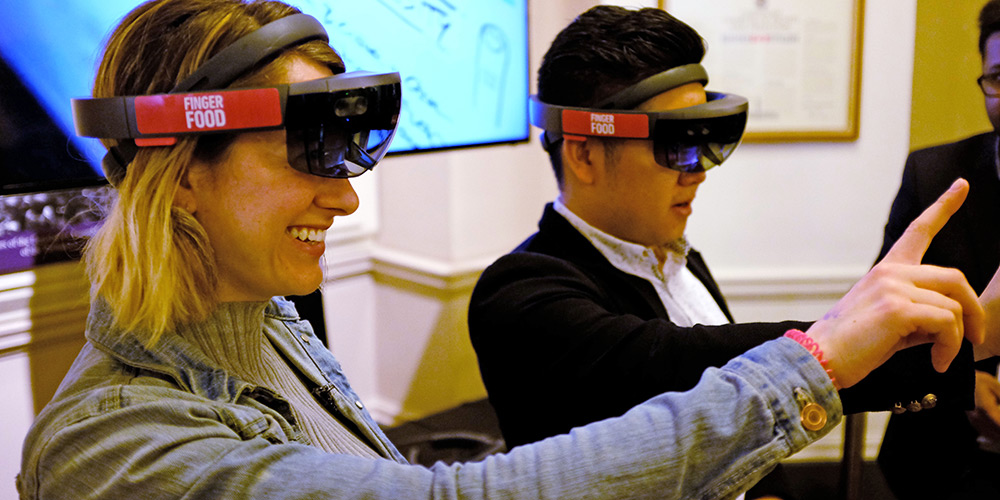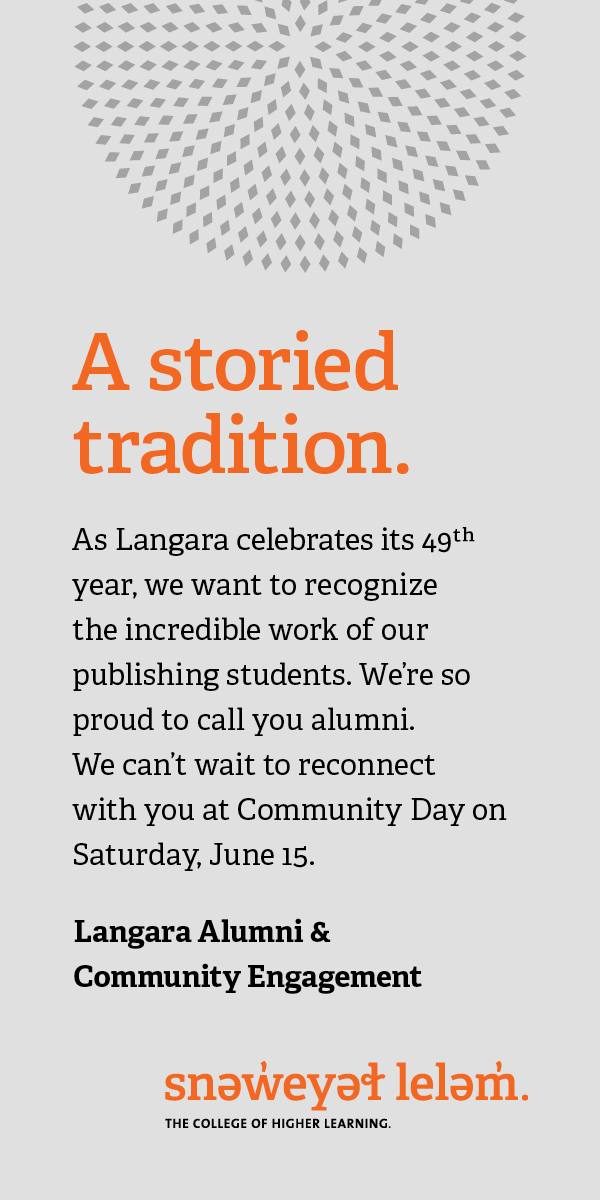You’re at Cirque du Soleil. The stage design is elaborate and light beams reach impossible heights overhead, but what catches your attention most is the contortionist right in front of you. Seemingly boneless, he fluidly moves between poses before your eyes. The most amazing part? You’re not actually at Cirque du Soleil. You are wearing a virtual reality (VR) headset designed right here in BC.
Cirque du Soleil happens to be one of many big-name clients of Finger Food, a Coquitlam studio that is leading the way with technologies like VR, AR (augmented reality), MR (mixed reality), AI (artificial intelligence), Machine Learning, the Internet of Things, Blockchain, and Robotics. Finger Food is one of the companies that creates new ways for us to interact with the world.
It’s not something in the distant future anymore; you can purchase a VR headset on Amazon or at your local BestBuy. The “Oculus Go” and “Oculus Rift” headsets for example, can transport you to a different world in your own living room. It sounds intimidating, as though we will soon all be living in an alternate reality, detached from our regular way of life. But the reality of VR is much more practical than one may initially consider. Cirque du Soleil, for example, is using this technology to help with their set design. It allows designers to get as close to looking at the real thing, but with the added bonus of changing, say, a square-shaped piece of the set into a pyramid, just with the flick of a finger.
MEC is another client of Finger Food, and they’re looking for ways to make online shopping a lot more tangible. The goal is to create 3D images of a product on their website, so shoppers can get a thorough look at a piece of clothing or equipment. When a buyer can inspect a product from every angle, the guess-work is eliminated.
Truck manufacturer PACCAR is upgrading to VR too, moving away from the traditional clay models used in vehicle design. Instead, designers worked with Finger Food to create lifesize holographic truck parts in VR form to envision their designs. The 3D prototypes allow PACCAR to work more efficiently, which speeds along the manufacturing process, and allows trucks to enter the market quickly. This is the first time holographic technology has been used in an industrial design process.
There’s also practical applications for the average person to use VR in their home. While VR and similar technologies are mostly being marketed for gaming purposes, companies like Finger Food are creating programs like Sphero that help kids learn how to code.
Even if you don’t see yourself having a holographic or mixed-reality experience in your living room anytime soon, if you do, there’s a chance it will have been created close to home.






